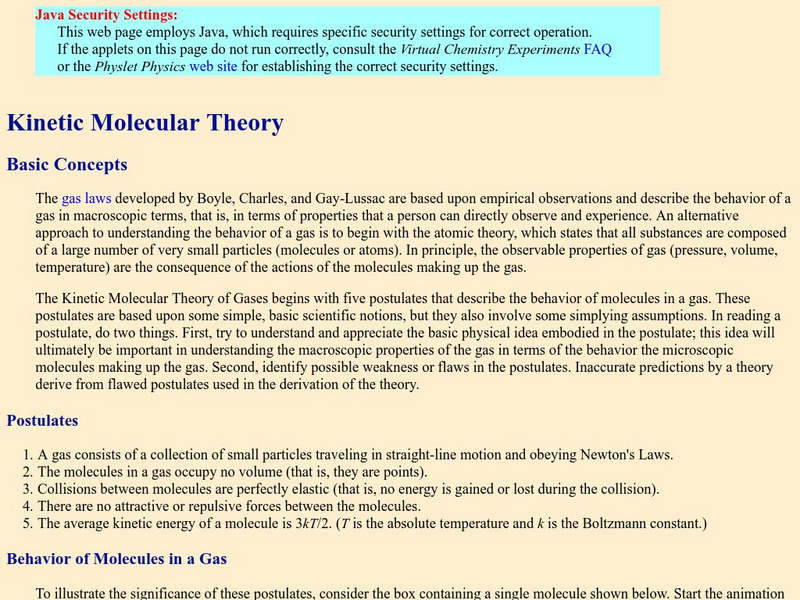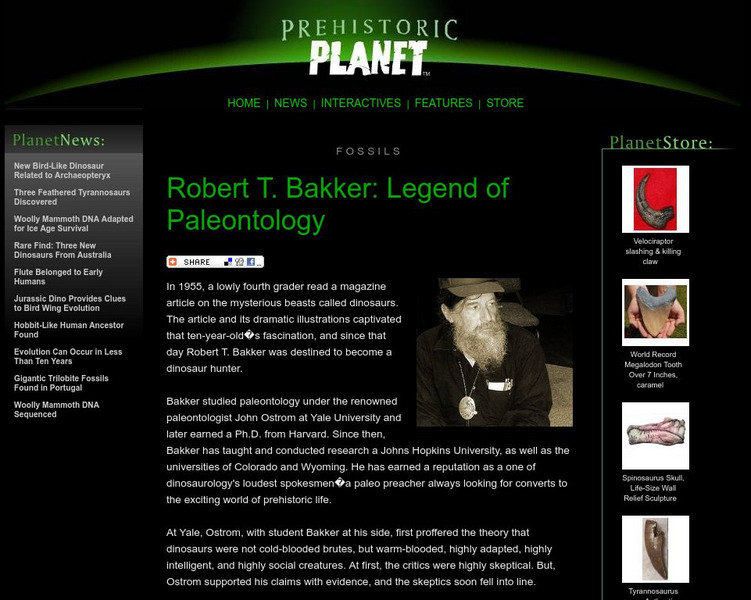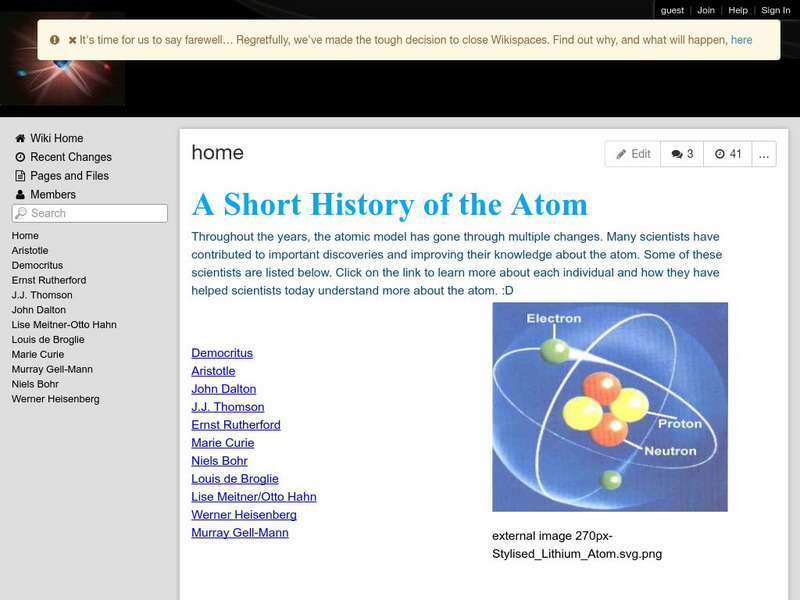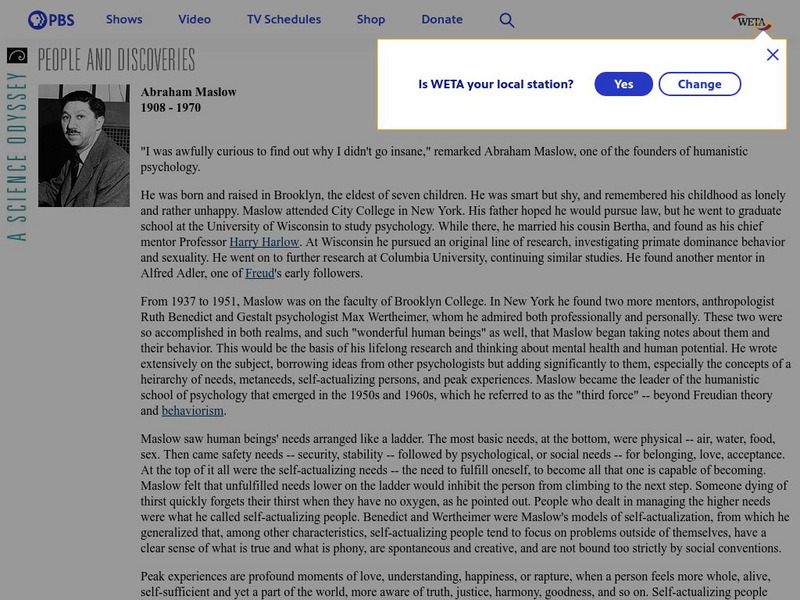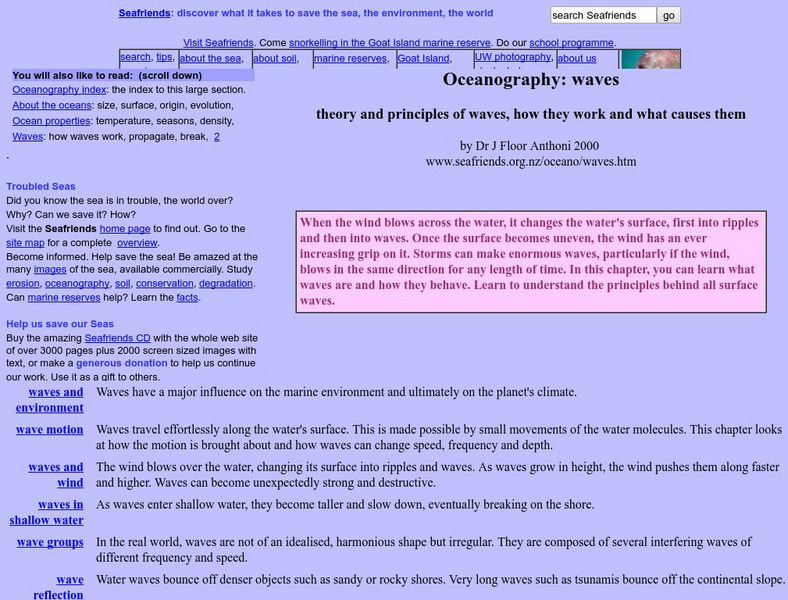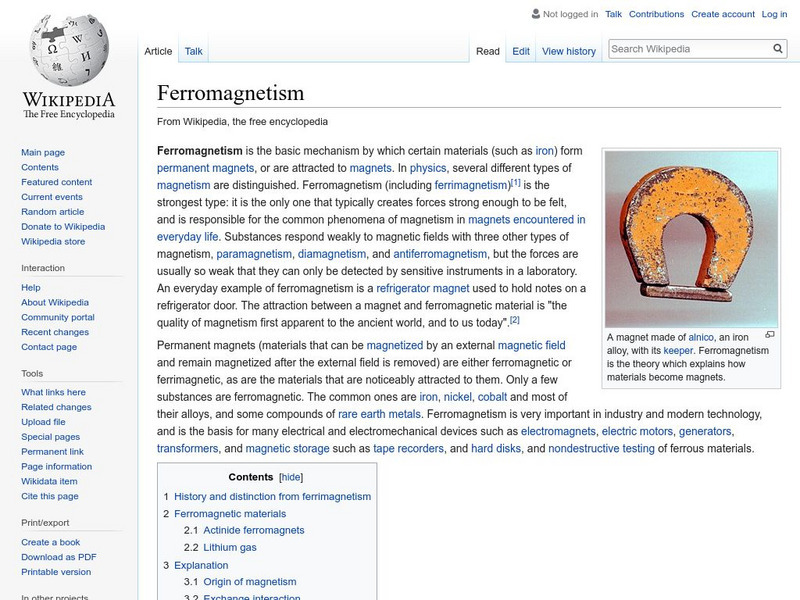Hi, what do you want to do?
Other
Theory Into Practice: Cognitive Dissonance
This site from the Theory Into Practice website provides a simple and straitforward explaination of the Cognitive Dissonance theory. The page gives a good example of the theory in action and references for further information.
Other
Behavior Doctor: Positive Interventions and Effective Strategies
Designed for parents and teachers in need of theories to understand problem behaviors of children and teens, Behavior Doctor also shares interventions and solutions to combat them, in the form of PowerPoint presentations, charts,...
Davidson College
Davidson College: Kinetic Molecular Theory: Basic Concepts
Discusses the basic concepts of kinetic molecular theory and presents animations illustrating the behavior of molecules in a closed box. Requires Java.
Shippensburg University
Shippensburg University: Personality Theories: b.f. Skinner
This biographical survey of the behaviorist B.F. Skinner (1904-1990) also discusses his writings (Walden II) and his theories on aversive stimulus, shaping, and the like.
University of California
Ucmp: Dino Facts a Unit on Dinosaur Behavior
For this unit, middle schoolers look at what is known about three dinosaurs - Maiasaura, Troodon and Orodromeus - and learn how paleontologists develop hypotheses about their behavior.
Other
All Psych: Chapter 8: Section 2: Our View of Self and Others
Looks at attribution theory, and error and bias in interpreting the behavior of others. Goes on to list and describe factors that influence attraction to others.
Other
Nicky Case: The Wisdom And/or Madness of Crowds
Why do some crowds turn to madness and other crowds turn to wisdom? Network science seeks to explain groupthink with its core idea being we should not study the individual people, but their connections. Use this interactive site to...
Other
Prehistoric Planet: Robert T. Bakker: Legend of Paleontology
Robert T. Bakker is a paleontologist from Wyoming, known for his enthusiastic approach to understanding the behavior and lives of dinosaurs. He has propounded many controversial ideas about dinosaurs, some of which are described here.
National High Magnetic Field Laboratory
Magnet Academy: Enrico Fermi
Enrico Fermi was a titan of twentieth-century physics. He outlined the statistical laws that govern the behavior of particles that abide by the Pauli exclusion principle and developed a theoretical model of the atom in his mid-twenties....
Khan Academy
Khan Academy: Non Ideal Behavior of Gases
Find out how real gases differ from ideal gases, and when intermolecular attractions and gas molecule volume matter.
Other
A Short History of the Atom
A classroom wiki where students present profiles of scientists who developed models of the atom or who contributed to the understanding of atomic theory. Covers Democritus, Aristotle, John Dalton, J.J. Thomson, Ernest Rutherford, Marie...
Other
Simply Psychology: Saul Mc Leod: Erik Erikson
An article featuring ego psychologist, Erik Erikson's research of psychosocial behavior in humans. Understand the eight stages of his theory.
Other
Learning Theory: Reinforcement
This site has a nice discussion on the nature and use of reinforcement in learning theory. Describes the four major types of reinforcement and also the use of reinforcement schedules.
Khan Academy
Khan Academy: Simultaneous Hermaphroditism, Egg Trading, and Prisoner's Dilemma
This is a five-question quiz pertaining to game theory in the passage "Simultaneous hermaphroditism, egg trading, and the Prisoner's Dilemma."
Georgia Department of Education
Ga Virtual Learning: Sociology: Socialization
Sociology instructional unit on socialization. Students learn theories about human behavior and self development through audio, text, and instructional activities. Links to supplemental reading.
PBS
Pbs People and Discoveries: Abraham Maslow
This PBS People and Discoveries site offers a great introduction to the work of Maslow. Includes a brief bio of Maslow and his ideas.
Harvard University
Individual Rationality as a Useful Approximation
Comments on Tversky's "Rational Theory and Constructive Choice," by Alvin E. Roth, Economics professor at Harvard. This paper was originally presented at the IEA Conference on "Rationality in Economics," IEA 16-18, 1993, Torino, Italy,...
Other
Seafriends Marine Conservation and Education Centre: Oceanography: Waves
A very detailed article on the characteristics of waves and wave behavior. It discusses the influence waves have on the marine environment and the global climate, the physics of wave motion, the interactions between waves and wind, wave...
Other
Sage Publishing: Play and the Learning Environment
Play is an important vehicle for developing self-regulation as well as promoting language, cognition, and social competence. This chapter discusses the definition of the physical environment and play, the defining characteristics of...
Other
Ahp: Humanistic Psychology Overview
A historical and factual overview of Humanistic Psychology as a Contemporary School of Psychology.
Massachusetts Institute of Technology
Mit: Open Course Ware: Mind and Machines
Focusing a study on the philosophy of mind, examine this thorough collection of resources to enhance discussions.
Khan Academy
Khan Academy: Smith, Marx, and Keynes
Spanning three centuries of history, from the dawn of the industrial age to modern times, three diverse thinkers developed their own landmark theories on commerce, labor, and the global economy. The three economists profiled in this...
Wikimedia
Wikipedia: Ferromagnetism
This site from Wikipedia provides a wonderful in-depth explanation of ferromagnetism, covering the atomic behavior which is responsible for ferromagnetic properties. Also introduces the concepts of magnetic domains and the Curie...
Georgia State University
Georgia State University: Hyper Physics: Diamagnetism
This site from the Georgia State University provides a brief introduction to diamagnetism, explaining how Lenz's law accounts for diamagnetic behavior in all materials.







